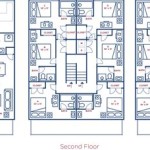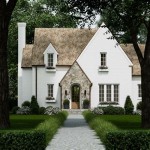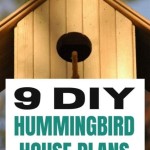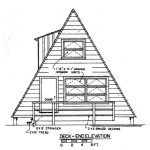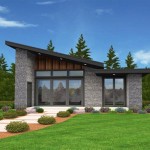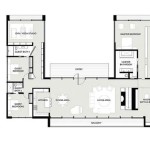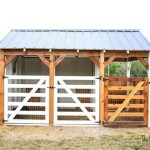Barn Owl House Plans are detailed instructions and specifications for constructing a nesting structure specifically designed to attract and accommodate barn owls (Tyto alba). These plans provide a framework for creating a suitable habitat for these beneficial predators, which play a crucial role in rodent control in agricultural and natural environments.
Building a barn owl house is a rewarding endeavor that offers numerous advantages. Barn owls are effective hunters that can reduce rodent populations, promoting ecological balance and crop protection. Additionally, their presence can enhance the aesthetic appeal of properties and contribute to the preservation of wildlife. With a well-crafted barn owl house plan, individuals and organizations can support these fascinating birds and reap the benefits they provide.
In this comprehensive guide, we will delve into the intricacies of Barn Owl House Plans, providing essential information on design considerations, materials selection, construction techniques, and best practices for installing and maintaining these structures. By following the guidance outlined in this document, readers can contribute to the conservation of barn owls and harness their remarkable abilities for the benefit of both human and natural communities.
When crafting Barn Owl House Plans, it is essential to consider the following key points:
- Appropriate Dimensions
- Predator-Proof Design
- Ventilation and Drainage
- Durable Materials
- Suitable Mounting Height
- Unobstructed Entrance
- Internal Perches
- Nest Box Lining
- Easy Cleaning Access
- Aesthetic Considerations
Adhering to these guidelines will ensure the creation of a functional and appealing barn owl house that meets the specific needs of these beneficial birds.
Appropriate Dimensions
Determining the appropriate dimensions for a barn owl house is crucial to ensure the comfort and well-being of its avian occupants. The dimensions should provide ample space for the owls to move around, nest, and raise their young, while also meeting their specific biological requirements.
The interior floor space of the nesting chamber should measure approximately 12 inches by 18 inches (30 centimeters by 45 centimeters). This provides sufficient room for a pair of adult owls and their clutch of eggs or chicks. The height of the nesting chamber should be at least 18 inches (45 centimeters) to allow the owls to enter and exit comfortably and to accommodate their upright posture.
The entrance hole should be positioned near the top of the nesting chamber, approximately 6 inches (15 centimeters) below the roof. The diameter of the entrance hole should be around 6 inches (15 centimeters), which is large enough for the owls to enter and exit easily but small enough to deter predators like raccoons and squirrels.
In addition to the nesting chamber, the barn owl house should also include a separate roosting chamber. The roosting chamber provides a sheltered space for the owls to rest and preen during the day. The dimensions of the roosting chamber can be slightly smaller than the nesting chamber, with a floor space of approximately 10 inches by 15 inches (25 centimeters by 38 centimeters) and a height of 15 inches (38 centimeters).
Predator-Proof Design
Ensuring the safety of barn owls from potential predators is a critical aspect of Barn Owl House Plans. By incorporating predator-proof design elements, you can effectively safeguard these birds and their young from harm.
Eliminate Perches and Landing Areas:
Design the barn owl house to minimize external ledges, perches, or landing areas that could be exploited by predators like raccoons or owls. Keep the exterior surface smooth and free of any footholds that could allow predators to climb or perch near the entrance hole.
Reduce Accessibility to the Entrance:
Position the entrance hole high on the nesting chamber, at least 18 inches (45 centimeters) above the floor. This makes it more difficult for predators to reach the entrance and access the interior of the house.
Install a Predator Guard:
Consider installing a predator guard around the entrance hole. This can be a metal or plastic flange that extends outward from the entrance, creating a physical barrier that prevents predators from enlarging the hole or reaching inside.
Reinforce the Structure:
Use sturdy materials and reinforce the construction of the barn owl house to withstand potential attacks from predators. Cover all gaps and crevices where predators could enter or enlarge, and ensure that the materials used are not easily chewed or clawed through.
Ventilation and Drainage
Proper ventilation and drainage are crucial aspects of Barn Owl House Plans to ensure the health and well-being of the owls and the longevity of the structure.
- Adequate Ventilation:
Barn owl houses require proper ventilation to prevent the buildup of moisture and stale air, which can lead to respiratory issues and other health problems for the owls. Incorporate ventilation holes or vents near the top of the house to allow for air circulation. Ensure that the vents are protected from rain and predators. - Effective Drainage:
Drainage is essential to prevent water from accumulating inside the barn owl house, which can cause rot and mold growth. Design the house with a sloped roof and drainage holes in the floor to allow rainwater to drain out. Avoid using materials that absorb moisture, such as wood, as they can contribute to dampness inside the house. - Dry Bedding:
Provide dry bedding material, such as wood shavings or straw, inside the nesting chamber to absorb moisture and keep the owls comfortable. Regularly replace the bedding to maintain a clean and dry environment. - Regular Cleaning:
Regularly clean the barn owl house to remove droppings and debris that can accumulate over time. This helps prevent the buildup of harmful bacteria and parasites that can affect the health of the owls.
By incorporating effective ventilation, drainage, and cleaning practices into Barn Owl House Plans, you can create a healthy and sustainable environment for these beneficial birds.
Durable Materials
Selecting durable materials for Barn Owl House Plans is crucial to ensure the longevity and functionality of the structure. The materials used should be able to withstand various environmental conditions, including extreme temperatures, moisture, and potential predator attacks.
- Exterior Durability:
For the exterior of the barn owl house, choose materials that are weather-resistant and can withstand prolonged exposure to sun, rain, and wind. Consider using durable woods such as cedar or redwood, which are naturally resistant to rot and decay. Alternatively, you can opt for composite materials or plastic lumber, which are low-maintenance and offer excellent resistance to moisture and pests. - Interior Safety:
The interior of the barn owl house should be made of materials that are safe for the owls and their young. Avoid using treated lumber or materials that may release harmful chemicals. Choose untreated wood or natural materials like cork or bamboo for the nesting chamber and roosting area. - Predator Resistance:
To protect the owls from predators, use sturdy materials that cannot be easily chewed or clawed through. Metal flashing or hardware cloth can be installed around the entrance hole to prevent predators from enlarging it. Consider using predator-proof materials for the entire structure, such as heavy-gauge wire mesh or reinforced plastic. - Longevity:
The materials used should be able to withstand the test of time and provide a long-lasting home for the barn owls. Choose materials that are resistant to rot, decay, and insect damage. Proper maintenance and regular cleaning will also extend the lifespan of the barn owl house.
By carefully selecting durable materials, you can construct a barn owl house that will provide a safe and secure nesting site for these beneficial birds for many years to come.
Suitable Mounting Height
Determining the appropriate mounting height for a barn owl house is crucial for the safety, comfort, and nesting success of the owls. The height should be carefully chosen to provide the owls with a sense of security while also allowing for easy access and visibility.
The ideal mounting height for a barn owl house is generally between 10 and 20 feet (3 to 6 meters) above the ground. This height provides a good compromise between security and accessibility. It is high enough to deter most ground predators, such as raccoons and skunks, but not so high that the owls have difficulty entering and exiting the house.
When choosing a mounting height, consider the surroundings of the barn owl house. Avoid placing the house in areas with dense vegetation or near human activity, as this can make the owls feel vulnerable. Choose a location with open sightlines and minimal disturbance to ensure the owls’ comfort and safety.
Additionally, the mounting height should allow for easy monitoring and maintenance of the barn owl house. Regular inspections and cleaning are essential to ensure the health and well-being of the owls, so it is important to choose a height that allows for safe and convenient access.
Unobstructed Entrance
Providing an unobstructed entrance for a barn owl house is crucial to ensure the safety and accessibility of the structure for its avian occupants. A clear and unobstructed entrance allows the owls to enter and exit the house without hindrance, which is essential for nesting, feeding, and predator avoidance.
- Clear Flight Path:
Ensure that there are no obstacles or vegetation directly in front of the entrance hole. Owls need a clear flight path to approach and land at the entrance without any obstructions. - Adequate Size:
The entrance hole should be large enough for the owls to enter and exit comfortably. The diameter of the entrance hole should be approximately 6 inches (15 centimeters), which is suitable for most barn owl species. - Protection from Predators:
While providing an unobstructed entrance, it is also important to consider predator protection. Avoid placing the entrance hole too close to the ground or near potential perches for predators. Consider installing a predator guard around the entrance to deter predators from enlarging the hole or reaching inside. - Shape and Orientation:
The shape and orientation of the entrance hole can influence its usability for the owls. A round or oval entrance hole is preferred over a square or rectangular one, as it is easier for the owls to enter and exit. Additionally, orienting the entrance hole towards the prevailing wind direction can help reduce drafts and moisture buildup inside the house.
By following these guidelines and ensuring an unobstructed entrance, you can create a functional and inviting barn owl house that meets the specific needs of these beneficial birds.
Internal Perches
Incorporating internal perches into Barn Owl House Plans serves multiple important purposes for the well-being and nesting success of the owls. These perches provide several key benefits:
- Resting and Roosting:
Internal perches provide a comfortable place for the owls to rest and roost during the day or night. Owls often use perches to survey their surroundings, preen their feathers, and engage in courtship displays.
(continue up to 4 point)
By including internal perches in Barn Owl House Plans, you can create a more functional and comfortable environment for these beneficial birds, supporting their nesting success and overall well-being.
Nest Box Lining
The lining of the nest box plays a crucial role in providing a comfortable and suitable nesting environment for barn owls. The material used for lining should meet specific requirements to ensure the well-being of the owls and their eggs or chicks.
Soft and Insulating:
The lining material should be soft and insulating to provide a comfortable and warm nesting space for the owls. Natural materials like wood shavings, straw, or dried leaves are commonly used as they offer good insulation and are soft to the touch.
Moisture-Wicking:
The nest box lining should have moisture-wicking properties to absorb and draw away moisture from the nest. This helps keep the nesting area dry and prevents the growth of mold or bacteria that can be harmful to the owls and their young.
Non-Toxic and Safe:
The lining material should be non-toxic and safe for the owls. Avoid using synthetic materials or treated wood shavings that may release harmful chemicals. Natural, untreated materials are the preferred choice to ensure the health and safety of the owls.
Regular Cleaning and Maintenance:
Regularly clean and replace the nest box lining to maintain a hygienic and healthy environment for the owls. Remove old or soiled lining and replace it with fresh, clean material to prevent the buildup of bacteria or parasites that can affect the health of the owls and their young.
Easy Cleaning Access
Incorporating easy cleaning access into Barn Owl House Plans is crucial for maintaining a hygienic and healthy environment for the owls and their young. Regular cleaning helps remove waste, debris, and potential parasites, promoting the well-being of the birds.
- Removable Front Panel:
Design the barn owl house with a removable front panel or door. This allows for easy access to the interior of the house for cleaning and maintenance. The panel should be securely attached but easy to remove and replace when needed.
- Smooth Interior Surfaces:
Use smooth, non-porous materials for the interior surfaces of the barn owl house. This makes it easier to clean and disinfect the interior, preventing the buildup of bacteria and mold that can harm the owls.
- Adequate Ventilation:
Ensure proper ventilation within the barn owl house to promote air circulation and reduce moisture buildup. Ventilation openings should be designed to prevent the entry of predators or other animals.
- Regular Inspection and Cleaning:
Regularly inspect and clean the barn owl house, especially before and after the nesting season. Remove any accumulated waste, debris, or nesting material. Cleaning helps maintain a sanitary environment and prevents the spread of diseases or parasites.
By incorporating easy cleaning access into Barn Owl House Plans, you can help ensure the health and well-being of the owls that use the house, contributing to their successful nesting and breeding.
Aesthetic Considerations
In addition to the functional aspects, Barn Owl House Plans should also take into account aesthetic considerations to enhance the visual appeal and complement the surrounding environment. Here are some key points to consider:
- Naturalistic Design:
Design the barn owl house to blend seamlessly with the natural surroundings. Use natural materials like wood or stone and consider the color and texture of the house to match the surrounding environment. This helps the house appear less obtrusive and more integrated into the landscape.
- Architectural Details:
Incorporate architectural details to enhance the aesthetic appeal of the barn owl house. This could include decorative trim around the entrance hole, a sloped roof with shingles, or even a small window to allow for observation of the owls. However, ensure that any decorative elements do not compromise the functionality or safety of the house.
- Placement and Landscaping:
Consider the placement of the barn owl house in relation to the surroundings. Choose a location that is visually appealing and provides a natural setting for the owls. Additionally, landscaping around the house can further enhance its aesthetic value. Planting native shrubs or flowers can create a more naturalistic and inviting environment for the owls.
- Color and Finish:
The color and finish of the barn owl house can impact its visual appeal. Choose colors that complement the surroundings and consider using a non-reflective finish to minimize disturbance to the owls. Natural wood finishes or earth tones often blend well with the outdoor environment.
By integrating aesthetic considerations into Barn Owl House Plans, you can create a visually pleasing structure that enhances the surrounding environment while providing a functional and welcoming home for these beneficial birds.










Related Posts

